We know that many of our visitors are looking for an all-in-one guide to cord-cutting with an as-simple-as-possible explanation of how to watch TV without cable. So that’s what we’re setting out to do here. In this guide, we’ll explain the importance of learning how to watch TV without cable after — or, preferably, even before — you cut the cord. We’ll cover the main ways to replace live TV and on-demand content, the best devices to use to stream that content, and the pros and cons of each type of service and device. We’ll wrap things up with a summary, plus a reminder of why we run this site and where you might want to go next. So read on: This is how to watch TV without cable.
Learning How to Watch TV Without Cable: The True Cord-Cutting Topic
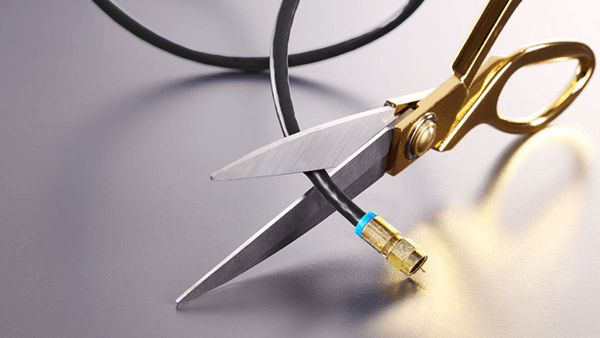
Our site may be called CordCutting.com, but we don’t write all that much about cutting the cord. We’ve told you why you should, where the trend came from, and how it’s hurting cable companies, but we don’t produce article after article telling you how to cut the cord.
There’s a reason for that: You already know how to cut the cord. It’s easy! You call up the cable company and tell them you’re done. They may give you the run-around a bit, but they’ll cave, and voila: You have cut the cord.
So when people ask “how to cut the cord,” it’s pretty clear that they’re not really asking how to cut the cord. They’re actually asking how to watch TV without cable. They’re asking how they can replace all of their favorite shows, how to watch the latest movies, and how to fill the void that channel-surfing, live NFL games, or whatever else they liked about cable has left in its wake. That’s what we dedicate the most time to here on the site. We call our site CordCutting.com because all of the topics we cover are related to cord-cutting in some way, but if we really wanted to name it after what we cover most, we’d call it HowToWatchTVWithoutCable.com. Not quite as catchy, we know.
Our site publishes a ton of articles, though, so writing just one page on the same subject means we have an awful lot to cover. Thankfully, the best methods for watching TV without cable can be grouped together and simplified in pretty helpful ways. That’s what we’re going to do in the sections below – but, first, it’s time for a brief moment of self-examination.
First Things First: What Do You Need to Replace?
Cable is too expensive, but it’s not useless — it’s just overpriced. Most of us are at least a little reluctant to part with cable because we like certain TV shows. Sure, you can cut the cord and replace it with nothing, but since you’re reading an article called How to Watch TV Without Cable, we’re going to assume that, like us and our readers, you like TV. You just don’t like cable or, more specifically, its hefty prices.
Here’s a harsh truth: if you want every last drop of content cable offers and want it in the exact way that they offer it, then you should not cancel cable.
If, however, you’re willing to settle for some or even most of the good stuff cable offers, plus a whole lot of new perks that you never even knew you could ask for, then cord-cutting is for you.
One of the great things about cord-cutting is that you get to decide what to use to replace cable. You can choose one solution or mix and match or just go listen to the radio instead — it’s all up to you. But that means we need to figure out which direction we want to take with all of this.
So now’s the time to ask: What do you like about cable? What do you like to watch?
You don’t need to put together an extremely detailed accounting of this right from the get-go, but it’s helpful to keep what you want in mind as we examine the services and devices that promise to deliver it. All of the cord-cutting world’s services and devices are setting out to solve certain problems and deliver on certain promises. You should have at least a vague idea of whether you care about the problems they address or should be excited by the promises they make!
Here are a few things that you may miss about cable:
- The content: Are you watching movies and TV shows that might be available on demand through services like Netflix? Is what you’re watching more important to you than when you watch it? Do you like old movies and re-runs, or discovering classic shows you’ve never seen before?
- Live viewing: Is it important to you to see shows the moment they air? Are you a sports fan who needs to catch the games live? Or, perhaps most illuminatingly, does your schedule allow you to watch things in real time?
- The experience: Do you like flipping channels? Just seeing what’s on? Do you like chatting at the water cooler about recent episodes of popular shows?
- Simplicity: Are you concerned about taking the trouble to get streaming services up and running on your TV? Would you like to just use one remote? Do you constantly forget your Wi-Fi password and want to avoid technology?
Keep these questions — and your personal answers — in mind as we go forward. It will help you identify which methods and services that follow are best suited to your needs.
How to Watch TV Without Cable, Part I: Replacing Content
There are a lot of ways to watch TV without cable, but we find it easiest to sort nearly all solutions into just three major categories:
- Streaming video on demand (SVOD) services
- Live TV streaming services
- Free over-the-air TV
(Side note: You can also buy or rent digital movies or TV show episodes from services like Amazon Prime Video, Google Play, and iTunes. That’s a bit removed from “watching TV without cable” in the sense that we mean it in this article, but it’s worth noting that you can use purchase and rental apps with the same streaming devices — see Part II for those — that work with the streaming apps we’re about to talk about here in Part I. Owning digital copies and subscribing to streaming services go together like peanut butter and jelly: Switching between a movie you own on Amazon and a show you’re streaming on Netflix is much more convenient than switching between cable and a Blu-Ray disc. You won’t even have to get off your couch!)
About these three major categories we just listed: Other than free over-the-air TV, these are all categories that include a lot of different services. But by grouping our solutions like this, we can get a good grasp on what different sorts of cord-cutting solutions are available. Remember: the best video streaming services can come in a few different flavors!
All of these will allow you to watch content on your TV, by the way, so don’t worry about having to watch anything on a computer screen. We’ll cover devices in Part II, but first, let’s talk a bit about each of these three types of content-replacement techniques and what they have to offer you. We’ll work through them in the same order that we listed them in that bullet list above.
Streaming Video on Demand (SVOD) Services

The long name might have you feeling confused, but there’s nothing tricky going on here: This is the type of streaming service that you’re probably most familiar with. Streaming video on demand (or “SVOD”) services are the ones that allow you to select a movie or TV show episode and watch it whenever you want — in other words, “on demand.” Netflix is the most famous of the SVOD services, but there are a ton of them out there these days: Amazon Prime Video, Hulu, and Max, to name just a few. Here’s a list to get you started:
- Netflix – The oldest major SVOD service is still the one to beat. Netflix offers movies and TV shows from all different studios, but it has helped lead the charge in original content, too, likely including some of your favorites. Thanks to Netflix and its competitors, asking how to watch TV without cable makes less sense every year — if the best shows aren’t on cable, then maybe the question should be how you’d ever watch decent TV with cable!
- Amazon Prime Video – This e-commerce giant has paired its streaming offerings with its Amazon Prime subscription service. Along with movies, TV shows, and original series, you’ll enjoy perks unrelated to streaming, like free two-day shipping on some items sold through the site. Amazon also acts as a broker for other streaming services: You can add Paramount Plus, for instance, to your Amazon account and stream it through Amazon Prime Video’s app.
- Max – You can get Max through cable or other streaming platforms like Hulu. Max lets you stream great content. HBO has been producing the best shows on cable for ages, so the fact that you can get it over the internet now is bad news for cable. Plus, HBO’s shift to streaming has helped prompt the original series arms race that now includes Netflix, Amazon Prime Video, and others.
- Hulu – Hulu features ads unless you pay a bit more, but it also offers something its competitors can’t: recent episodes of TV shows from seasons that are still ongoing. That makes its offerings a little more current than the competitions’, though Hulu also has plenty of golden oldies. Hulu also offers a skinny bundle service.
- Crackle – Crackle is technically an “AVOD” service. That’s just like SVOD, except that it’s advertising-supported. And since it’s ad-supported, Crackle is free! Don’t expect Netflix-sized catalogs from the AVOD set, but do expect quality content for free. You will, of course, have to sit through ads to get it.
- Tubi – Tubi is another big AVOD service and works pretty much just like Crackle. You can create a login even though Tubi is free — like most decent AVOD services (including Crackle), Tubi uses accounts to allow users to save watchlists and pick up streaming where they left off.
That’s not an exhaustive list, of course — we’ve left out HBO competitors like Showtime, AVOD options like Popcornflix, and genre-specific streaming services like Shudder, to name just a few — but it’s a great place to get started as you check out various SVOD services.
Live TV Streaming Services
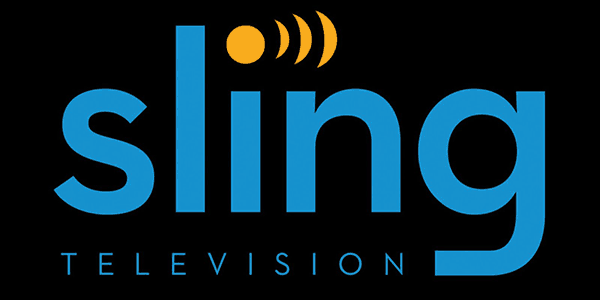
Streaming video on demand is a great way to replace content from TV: You can watch your favorite shows and movies online whenever you want! But is that really the same thing as being able to watch TV without cable? To some people, sure — but others might find that their favorite things about TV are missing. What about brand-new episodes of the latest network TV shows? What about channel surfing and just seeing what’s on? What about live sports?
One answer to these cries is the live TV streaming service, or “skinny bundle.” The idea is a pretty simple one: These services are like cable subscriptions, only online — and cheaper.
Cable stinks, but it didn’t always stink, and its channel bundles include some great stuff. That inspired the companies behind the major live TV streaming services to set out to beat cable at its own game. They began to offer pay TV “multichannel” services — industry lingo for cable and satellite-type pay TV bundles — only they slashed the size and the price of cable’s bulky bundles and offered folks a key selection of channels for less. And since these services stream online, you can watch them anywhere and on almost any device.
These services offer the network TV channels you crave: ESPN, AMC, TBS, and a whole lot more. You can subscribe to premium channels like Max through these same services (They’re usually available as add-ons for a set price), and you’ll also get major broadcast networks like ABC, CBS, Fox, and NBC — though the catch with those four is that they’ll be available in select markets only. The major skinny bundles also offer a mix of regional sports networks (in their relevant markets only), meaning you may be able to cancel cable and still watch your favorite local professional and college sports teams.
Here are a few of the live TV streaming services you should know about. Click the name of any of these services to sign up. Many of these services offer free trials!
- fuboTV – fuboTV has a nice selection of channels that includes a lot of sports channels. Fans of sports like soccer will delight in the offerings.
- Hulu Plus Live TV – Hulu’s straightforward offer is a $69.99-per-month bundle (ad-supported) — after a free trial, of course.
- Philo – Philo is all about affordability. You can snag this bundle for $25 per month — an incredible price for this type of service. The drawback? Philo offers no local channels and no sports.
- Sling TV – The oldest skinny bundle on this list allows subscribers to pick one (or both) of two base packages and then build out a customized bundle with small and affordable “extras,” or add-on bundles. You can pay as little as $40-$45 (Sling Orange or Sling Blue with no add-ons) or as much as you want (at least until you run out of extras to buy).
- YouTube TV – Google’s skinny bundle service builds on its YouTube brand. It’s a great $72.99-per-month service that rivals the best of its longer-tenured competition.
As with the SVOD services, this isn’t an exhaustive list, but these are the live TV streaming services that we know and love best here at CordCutting.com.
Free Over-the-Air TV
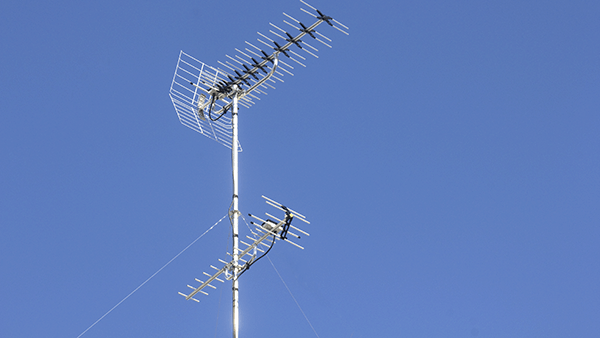
Free over-the-air TV is one of the most under-reported parts of the cord-cutting revolution, but many cord-cutters know that cable wouldn’t be nearly so easy to part with if it weren’t for this free TV bonanza.
Here’s the deal: Your local ABC, CBS, Fox, and/or NBC affiliates are broadcasting from those big towers you see on their properties. They’ve been doing so since before cable existed, and they’re still going strong. You can get that coverage for free just by picking out an antenna that’s appropriate to your location, connecting that antenna to your TV, and scanning for channels. And you’ll find that it’s not just the “big four” major networks: PBS, Univision, and a bunch of other channels are broadcast over the air, too. Your selection will vary depending on where in the country you are, but you should have lots of options in most urban and suburban areas, as well as in plenty of rural ones.
Free over-the-air TV solves some of the same problems as live TV streaming services do: it offers live TV and the channel-surfing experience, two things that SVOD solutions lack. It lags in content behind live TV streaming services, as many familiar channels are available on pay TV streaming services but not via free over-the-air TV. On the simplicity front, though, nothing beats free over-the-air TV: just plug the antenna into your TV, scan for channels, and watch. You won’t need a streaming box, streaming stick, or a smart TV. You won’t even need an internet connection!
Oh, and did we mention that modern OTA is in HD? Yeah, this isn’t your grandpa’s antenna TV.
Free over-the-air (OTA) TV isn’t too complicated of a subject, but it’s an unfamiliar one to a lot of us. To learn more, check out our coverage:
- Essential Antenna Tips for Cord-Cutters
- How to Choose the Best TV Antenna for Your Needs
- Do You Need an Antenna for Each TV in Your House?
- How to Get Clear TV Antenna Reception
Mixing, Matching, and Prioritizing: How to Watch TV Without Cable Using the Above Solutions
Cord-cutting is the easiest thing in the world: just cancel cable! It’s replacing the content that gets tricky. And part of what makes it tricky is that pesky truth that a lot of our peers in the cord-cutting media would prefer to ignore. We’ll say it again: If you want every channel that cable offers in exactly the way that they offer it, you should not cut the cord. When we explain how to watch TV without cable, we explain how to watch certain channels for free, and others for less, and some shows and movies on demand. What we’re not saying is that you can watch every cable channel you used to get for less without cable. We’re simply giving you tools to replace a whole bunch of stuff, plus gain some new content and perks. It’s up to you to decide what to do with that!
Cord-cutting is, ultimately, a budgeting decision. It’s about looking at big, dumb, overpriced cable and deciding it’s not worth it. But what you think is worth it is up to you and only you. If you want to cancel cable and replace it with nothing and live in a cabin in the woods, that’s cord-cutting. If you decide to replace cable with Netflix and an over-the-air antenna because you like live broadcast television and are willing to replace live network TV with on-demand network TV shows, well, that’s cord-cutting, too. And if you replace cable with a huge streaming bundle that has just as many channels as your old cable service did, yes, that’s cord-cutting, too.
But if you get “Gotta Have It!” and then also sign up for Netflix, Hulu, and Amazon Prime Video, and then sign up for MLB.TV, too, then you still have to pay for internet, which is more expensive now that you’ve canceled your cable bundle… well, all of that is going to add up. You might end up writing one of those dumb articles saying that cord-cutting doesn’t really save cash (No, we’re not going to link to them but trust us — they’re out there). Here’s the truth: Cord-cutting always saves cash. It’s replacing all the content that could cost you, so now is the time to decide what you think is most sensible.
Think again about those questions we started with. If you don’t care about live TV, this is a no-brainer: A couple of SVOD services can replace cable and save you a bundle. Or maybe you want to throw OTA into the mix. Maybe a super-skinny skinny bundle and just one SVOD service are the answer. And remember, our list above isn’t exhaustive — there are so many streaming services out there, and you’re sure to find one that suits you. There’s a service specifically for people who want to watch Hallmark Channel movies (it’s called Hallmark Movies Now), another service dedicated to horror (we have a price guide for Shudder — which is what this service is — too), and other services focused on everything from anime to baseball.
Consider what you can’t live without, and what you might be willing to give up. Weigh your options and punch some numbers into our super-simple cord-cutting calculator. Come up with a plan.
Our guide to watching TV without cable isn’t over just yet, though. That’s because your plan, once you make it, is likely to include at least one streaming service (and maybe more than one). And unless you really like small screens (and who does?) that means you’ll probably want to be able to use streaming services on your big, beautiful TV. And that brings us to our next topic of discussion: hardware.
How to Watch TV Without Cable, Part II: What to Watch It On
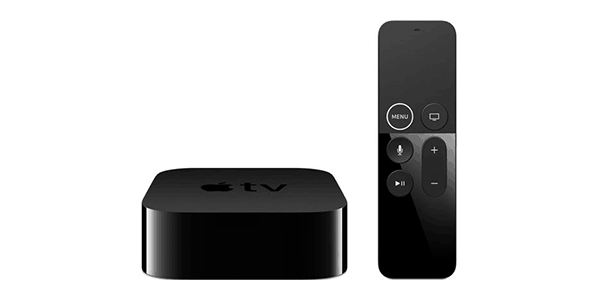
We’ve covered the major techniques and services that you can use to watch TV without cable. But what about watching TV without cable on, you know, your actual TV? You already know that OTA antennas plug straight into your TV, but loading up on streaming services doesn’t help much unless you have a way to watch those on your TV, too. Fortunately, there’s an entire industry built around solving this dilemma. Let’s talk streaming hardware!
You most likely already know, at least vaguely, how streaming video works: It comes in over the internet, bit by bit, and is played on a screen by a computer. But when we say “a computer,” we don’t mean that you have to use a desktop or laptop. Your smartphone is a computer, too, and so are all the devices that you can use to stream TV without cable on your TV itself.
There are two basic ways to stream on your TV: You can use an external streaming device or you can simply use a smart TV. In practice, these two things are really just the same. Either way, a little computer is streaming the content and telling your TV what to put on. Whether you opt for the all-in-one solution (the smart TV) or the plug-and-play one (the external streaming device) is really up to you.
Not so long ago, blogs like ours tended to be a bit skeptical about smart TVs. The reason for that was that external streaming devices had an edge, generally speaking, in ease of use and in their app libraries. Like your smartphone or tablet, streaming devices and smart TVs tend to connect you with services through individual apps rather than through an internet browser. Also like your smartphone, apps for one platform don’t work on another — so each platform has its own “app store,” just like iPhones and Android phones have different app stores. services have to make apps for each platform separately, and streaming platforms that traditionally came on external devices, like Roku, have the most apps available.
But times change. Nowadays, Roku makes smart TVs as well as external devices. Sony is using Google’s Android TV platform on many of its smart TV models. And Amazon is making its own smart TVs, too.
These smart TVs work just like their streaming device counterparts. A Roku smart TV, for instance, looks and acts in virtually the exact same way as a regular TV would if you plugged an external Roku into it.
So when we compare the ways to stream, there’s a better question to ask than “smart TV or external device?” The better question to start with might be “Which platform is right for you?” Once you’ve picked a platform — whether it be Roku, Fire TV, Apple TV, or another — then you can weigh the pros and cons of smart TVs and devices.
Choosing a Streaming Platform
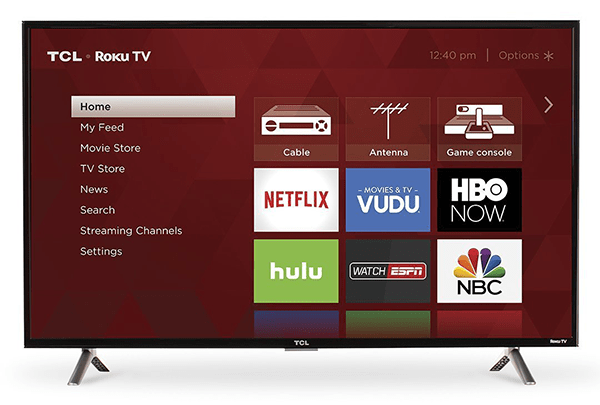
With that in mind, let’s get to know the platforms. Once we’ve done that, we’ll move on to discussing what to look for in a specific device. That second part will be a whole lot less daunting if you’ve already narrowed down which product lines you’ll be looking for, so give this list of major streaming platforms a quick read-through:
- Roku – Roku was making streaming boxes since back when “streaming box” just meant “Netflix box.” Turn to Roku for a massive app library (called “channels”), a very simple user interface, and a nice range of price points.
- Fire TV – Amazon’s platform is ideal for Amazon power users because it surfaces Amazon content. Its appeal isn’t limited to that, though, and the prices on Amazon devices make them irresistible to some buyers.
- Apple TV – Apple TV is just what you’d expect from Apple: It’s simple, beautiful, works wonderfully, and costs a good deal more than most of the competition.
- Android TV – Android TV is a highly customizable platform, and it appears in various forms on all kinds of devices. You’ll spot it on some Sony Smart TVs and the Nvidia Shield, among others. It offers a robust app library that includes better gaming options than most streaming platforms can offer.
- Chromecast – Google’s Chromecast devices work a little differently than their competition. The idea with Chromecast is that you choose what to watch on some other device, then sling the screen up to your TV. So with the itty-bitty Chromecast dongle plugged into your TV, you’d then turn to your laptop, smartphone, tablet, or other device and fire up Netflix or whatever else you want to watch. Then, with the touch of a button, you could put the stream up on the TV. It’s affordable and simple, but the drawback is that it’s a bit harder to collaborate with others when choosing what to watch.
Choosing Your Device
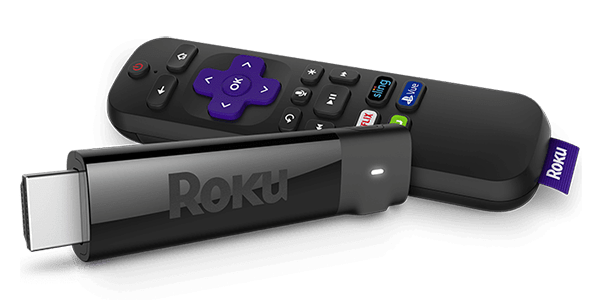
None of this platform-focused talk is meant to imply that it doesn’t matter whether you spend $35 on a streaming device or $200, nor that it doesn’t matter whether you choose an external device or a smart TV. But thinking about platforms first is a helpful way to narrow down your options, because — as we’ll see in a moment — each of these platforms offers a lineup of its own, which means you’d be dealing with an awful lot of choices if you didn’t first take some out of the running.
With some idea of what sort of platform you’d prefer, things get easier fast. For instance, if you’re looking for simplicity and user-friendliness, you might focus on just Roku and Apple TV devices, and not bother to research Fire TV, Chromecast, or Android TV.
But what do you look for when you’re researching your device? There are a few key questions to consider:
- Do you want to be able to stream in 4K? There are 4K smart TVs and streaming devices that can work with 4K content and TVs, but they are going to cost you more than ones that top out at 1080p.
- Do you want to rely on Wi-Fi? Some pricier streaming devices allow you to use an Ethernet cable to connect to the internet. If your router is in a convenient spot, and depending on how reliable your Wi-Fi is, you may want to take this path to smoother streaming. Wired connections are faster and more reliable than Wi-Fi.
- Do you want a Smart TV? Smart TVs are convenient all-in-one solutions. But some of the platforms not mentioned above are less elegant than the ones we listed. Buying a separate streaming box means you can upgrade your TV and streaming devices at different times, which could be convenient or not, depending on your situation and finances.
- What’s your budget? This question is related to all others, of course, as choosing to address your other preferences will mean spending more on a streaming device.
With those questions in mind, let’s look at your device options. Each streaming platform offers its own product line, but we can sort all the offerings into a few loose categories without doing too much violence to their stated purposes.
- The budget streaming device – Low-cost streaming devices tend to take the form of small dongles that plug into TV HDMI ports. They rely exclusively on Wi-Fi and have weaker Wi-Fi antennas and processors. These can cost as little as $35 or so. Examples: Roku Express, Chromecast.
- Mid-range options – Spend $40 to $60 or so and you’ll get a beefier streaming device with a more powerful Wi-Fi antenna. Examples: Roku Stick, Amazon Fire TV Stick.
- Mid-range 4K-capable devices – Starting around $60 or $70, you’ll find the first 4K-capable devices. You’ll see some better processors and Wi-Fi antennas, too. Examples: Roku Stick+, Amazon Fire TV, Chromecast Ultra.
- The fancy ones – Some product lines top out before reaching $80 and up (Fire TV, for example), while others don’t appear until the mid-hundreds. Here, you’ll find Ethernet ports, external storage ports, and the best processors and Wi-Fi antennas in the market. The price range in this group is the largest, so check those price tags. Examples: Roku Ultra, Apple TV 4K, Nvidia Shield.
- Smart TVs – A smart TV is going to cost you more than a streaming device 99 times out of 100 because, well, it’s a TV, too! But a smart TV with a great platform can be an awesome choice. Be a little wary of lesser-known platforms. They can be clumsy to use, and if you’re not actually using your smart TV’s smart-ness, that’s a waste (and might lead you to buy one of the devices above in the end anyway). Another important consideration: the bigger the streaming platform, the better the app selection. You can watch Netflix on anything, but support for smaller SVOD services and skinny bundles is a bit rarer. Last but not least, it’s worth noting that fans of simplicity who are planning to use an OTA antenna to watch TV without cable may find they prefer smart TVs, since the input selection will be built in and everything can be handled with one remote (by contrast, using an OTA antenna and a separate streaming device will mean using the TV remote to watch OTA TV and the streaming device remote to stream – and the TV remote again to switch between the two inputs). Examples: Sony Smart TVs (many run the Android TV platform), Roku TVs (manufactured by TCL and others), Fire TV Edition TVs (manufactured by Element).
The examples here aren’t exhaustive, but they’ll help you get a sense of where the tiers are with these products. Pick a platform and a tier (or two), and you’ll have narrowed your research considerably. Once you have some ideas, why not check out our reviews?
Putting It All Together
So there you have it, folks: that’s how to watch TV without cable. Canceling cable is the easy part, but replacing your content doesn’t have to be so hard! Let’s recap:
You’ll replace your content:
- Streaming video on demand services like Netflix will give you movies and previously aired episodes of TV shows
- Live TV streaming services or “skinny bundles” like Sling TV will give you live network television channels like ESPN
- Free over-the-air TV will give you live broadcast television channels like ABC, CBS, Fox, NBC, and PBS
Then you’ll put that content on your TV:
- You can simply plug your antenna into your TV (don’t forget to scan for channels)
- You can put your streaming services on your TV with a streaming device: choose a platform and a device (either an external and HDMI-connected device or an all-in-one smart TV solution), and get streaming!
That’s all there is to it, but — as you can tell from the length of this article — there’s plenty to explain, discuss, and debate about watching TV without cable.

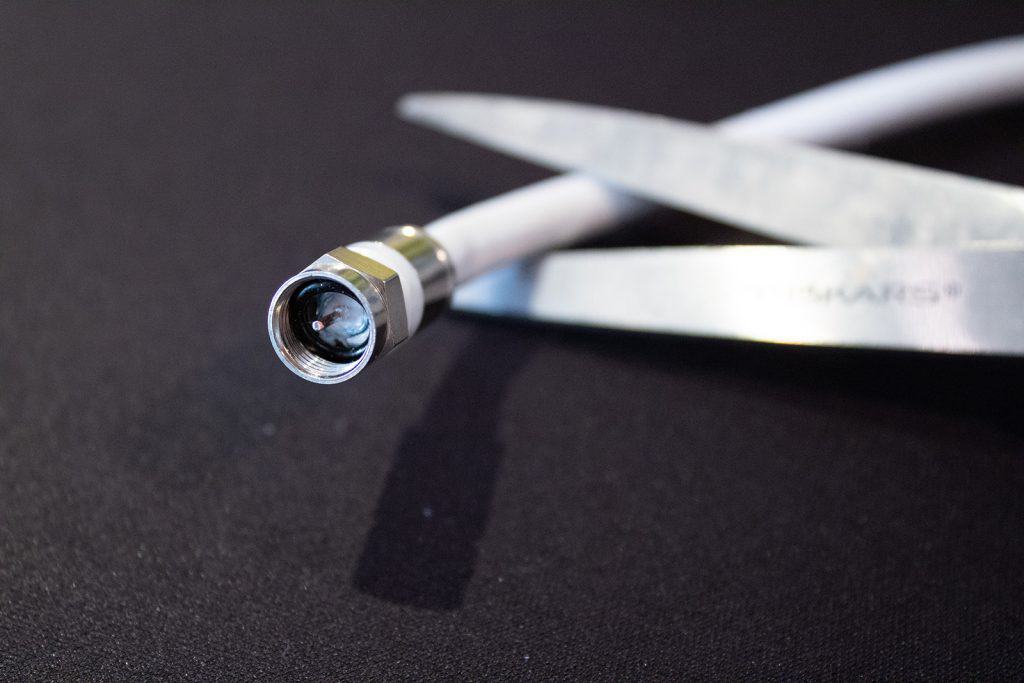





Thank you for making all the info very clear. Some of us are older and not techie… yet.
Thank you for your kind words! It’s nice to hear that our content has been of benefit.
Very educational. Will revisit. Thank you
I have never read an article so confusing! You provided no help at all!!!
me too
Great guide, but speaking of that, you didn’t mention having a channel guide for cord-cutters. We use the FREE one at https://next-episode.net/. You just load it with your shows and pull it up on your computer or phone. Even better — we recently started using a Fire Stick with our Amazon Echo, and we can pull up the “guide” by simply saying “Alexa, open the Silk Browser”. We made the guide our home page on the Silk Browser, for convenience. Once we see a show we will watch, we mark it off of our list, and then say something like “Alexa, play Chicago Med on Fire Stick” and it loads directly into Hulu… way cool! 🙂
Thank, indeed! I haven’t read it yet, but I’ve downloaded it (plus the older one) to my Pocket so I can have a quiet read after the telephone stops ringing.
Ok, I’m dumb when it comes to this stuff. Please clarify…. besides an antenna, to watch anything else with a fire stick still needs internet service from the cable company?
Yes, that’s right — the Fire TV lets you watch streaming video services like Netflix, but services like that won’t work unless you have some way of connecting to the internet.
Ok if I cut in on this conversation? I have been researching chord cutting and streaming tv alternatives? My problem is I do not have a mobile phone or apple store google play. My laptop only runs windows. I’ve already started running in to issues getting the apps necessary to run devices like Roku and even my router. I do not want to buy products if I can’t access the apps.
Most of these services will work just fine inside of a browser window, so you could just watch them on your Windows PC. You could also download the apps for your Roku. Without knowing more, it’s hard for me to say what’s behind the issues you’re having with your Roku apps and router.
How do you find internet at reasonable price point that works well (streaming) for these bundles as most providers want you to bundle internet with TV or mobile devices?
You might want to check out our piece on the subject: How to Get Internet Without Cable: Your Guide to Choosing the Right Plan and Saving Money. 🙂
already read it but need more detail on exactly what is needed to stream channels. I do not have a smart tv. It does have an HDMI hook up. It is a Samsung that came out just before smart tv’s. and will I be able t o run it from my windows based microsoft laptop.
Thank you for the great article. I came across it while trying to find alternatives for my mother. She is not techy at all. She lives in a rural area with no cable access and still has dial up internet. Currently, she has a satellite. She is trying to cut costs and I am researching antenna boosters because the nearest TV station is over 90 miles away. Do you have any suggestions regarding those? Thank you!
I understand streaming video is now legal in all areas because it cannot be recorded. Does that make out of market TV stations available for the individual viewer to receive? How about nearby markets where their coverage may overlap an adjacent market? Could someone sign up for YouTube TV and show a distant zip code?
THANK YOU FOR THE EXPLANATIONS / INFO. I was not sure about any of this due to my lack of being properly informed and educated. Your articles clear it all up. LOVE your website.
what brand of tv antennae?
THANK YOU, THANK YOU, THANK YOU! I am one of those who can’t grasp the current and ever changing technology but your article is well laid out and easy to read and follow. Some areas I will need to reread again but I see the light at the end of the tunnel.
I cannot thank you enough as I wander down the path of life without cable.
Thanks so much for reading!
Putting this in a nutshell it looks like cutting my cable is the way to go. does anyone know if I can use Roku and philo together? I do not have a mobile device or cell phone. My laptop is Windows Can I still do everything I need to do without having google play or the app store?
so putting this in a nutshell. Can I use Roku and Philo together? I do not have a cell phone or mobile device. My laptop runs on windows. Can I still do everything i need to do without google play or the app store?
Yes! You can sign up for Philo with an email account rather than a phone number. I believe you can also start an account on your Roku device and have it billed through your Roku account.
As I begin to research the possibility of cutting my cord (and my $210/mo bill) this is a great article. However, I think there needs to be a Part III: Time shifting. This is the aspect of cord-cutting that has me most hesitant. We probably watch 95% of our shows from what we’ve recorded on the DVR. This includes the approximately 24 hours of college football that I record every Saturday, and then watch over the course of the week. Does this mean I’m not a candidate for cord-cutting? Thanks
Can you come over.? I’m in information overload.🤣🤣 I’m paying $151.00 to charter for internet/land phone/internet and I’m only getting 10 channels that I choose and 10 channels I’m forced to take (I rarely watch those)! Reruns constantly. The channels I want is Create tv & msnbc, pbs….. what’s a good choice for me.?
You should just pay for internet. Get rid of the land line. Get a roku device and pay $25 a month for a lot more channels (Roku is currently offering $10 a month to start). Any channel you want to watch can be streamed using Roku.
I have multiple TVs, Two have Chromecast installed on them by default. The others are older not so smart TVs. If I buy a firestick or Roku for them, do I have to pay for the streaming services for each TV, or will one subscription work for all of the TVs?
Just once! When you sign up for a service like Netflix, you’ll get a login (usually your email address) and make a password. Just use those to log into the apps you download on your Roku and Fire TV devices (you should see an option to “log in” instead of creating a whole new account).
So if I am understanding this correctly…..if I cut cable and only get internet, I will need some type of device that will transmit programs from Netflix, etc.? These devices hook up to the television?
Yep, that’s pretty much right! You can either attach a streaming device to your TV — just like you would have with a VCR back in the day — or you can buy a smart TV, which basically just has a streaming device built right into it. Either way, your streaming device/smart TV will act a little bit like a smart phone or a computer. You’ll be able to download apps, sign up for services like Netflix (or just sign in, if you already have an account), and watch shows and movies on those different apps.
This was very helpful, thanks. So how does someone go about testing the new set-up before cutting the cord? I’d like to try out my new method to make sure I like it before actually cancelling cable. I’ve gone with Apple TV, Hulu, Netflix and an over air antenna (that still needs set up). Would I just unplug the cable box to turn cable temporarily off?
I’m sorry. I’m trying to find the right reason to cut the cord…..but I can’t. The dollar difference isn’t that dramatic. I don’t watch more than 15 channels regardless of the number offered….and only my cable operator provides mine. HULU and YOU TUBE TV don’t offer regional sports channels. Only HULU offers original exclusive content…which I can buy without their full package. And the cable operators get a bad rap for service…..when in reality they offer a live voice who are terrific. So other than the ugly cable itself that MAY be visible if not planned properly, its cable to me hands down.
I tried.
Hulu+Live offers regional sports channels in my area (California’s Central Valley).
I live beyond the broadcast reach to use an antenna. I want to watch live, local nightly news and PBS without cable. Are there options other than cable?
PBS has a ROKU app and so do many local news stations.
What about DVR’s?
I will not watch anything with commercials that I can’t zap. Paying for something that is half commercials, no way would I do that. They would have to pay me to watch it.
How to run live TV and a skinny bundle plus any additional sports content through a DVR so that I can strip the commercials?
Thanks.
Are services that stream live compatible with DVR’s?
It is a sticking point for me and it is hard to determine with out purchase. For example Hulu live streams and Tivo says it will record anything. After buying I found that Tivo records anything but Hulu.
I’m completely confused. I would like to cut my cost on Cable TV but don’t understand what any of this means. I have 2 TVs one of which is older and cannot pick up all the stations while the other set is 1 year old and gets more programming. Can my older TV also get what the new TV gets with any of these companies. Also, does it work like TV? In other words if I turn to a specific channel does this give me all the shows that channel gets or do I search for them? Also, my cable company gives me TV, Computer and phone. Would I still have to keep my computer connection to watch these companies on TV? I hope this makes sense. I’m 72 and dont know anything this stuff but need to save money. Plus Madison is the only cable company here with only 1600 people. Does that matter?
The thing that is a turn-off for me with OTA channels is not being able to record them. I chose Hulu+Live for that reason. I also have the Frndly TV app.
STEVE, I SAW A POP-UP ADD WHILE WHIPPIN’ THRU MY SCREEN. IT WAS FOR A LITTLE – SAY 3″ ACROSS ROUND UNIT – YELLOW WITH WIRES TO ATTACH TO YER TV, NOW I CAINT FIND IT, HAVE U SEEN THIS ITEM?